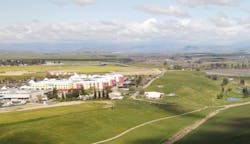Central Cal’s Valley Children’s Healthcare planning Renewable Microgrid for Hospital
Valley Children’s Healthcare, a pediatric healthcare network in Central California, has revealed a new environmental strategy to achieve energy resiliency for hospital campus operations and improve air quality in the region.
The plan includes reducing greenhouse gas emissions by 50 percent by 2030 and achieving net-zero carbon emissions by 2050. It also includes the deployment of the “largest pediatric healthcare-based renewable energy microgrid” in the U.S., the hospital network says.
The renewable energy microgrid, to be operational in 2025, is expected to lessen dependence on the traditional power grid, ensuring the hospital and its buildings stay functional during power outages.
“Whether it is drought, wildfires, severe weather or interruptions to the State's power grid, there is no question that the environmental challenges facing this region, and our hospital operations, are significant and will only continue to intensify over time,” said Todd Suntrapak, President and CEO of Valley Children’s. “Our commitment over the last seven decades, and for the next seven decades and beyond, is to provide the best care to the kids of this Valley and to improve the environment in which they live. The strategy we are announcing today will help us to accomplish both of those goals.”
Valley Children’s says it is dedicated to creating energy resiliency and confronting climate change’s impact on families in Central California. The hospital plans to create a sustainable and clean energy strategy for the main hospital campus located in Madera, invest in water treatment and recharge capabilities and develop a 10-year plan through the Valley Children’s Guilds Center for Community Health.
Moreover, the healthcare provider aims to promote sustainable food practices by sourcing food from local and sustainable producers and reducing food waste.
